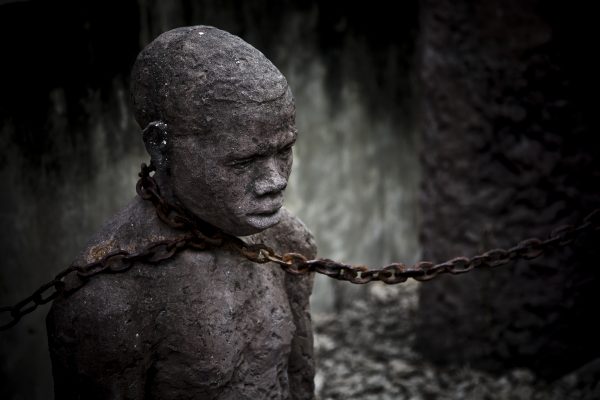We live in a world that is forever demanding immediate, easy answers, and we can’t always put off those demands by looking mysterious and saying it’s all too complicated.
We live in a world that is forever demanding immediate, easy answers, and we can’t always put off those demands by looking mysterious and saying it’s all too complicated.
There is surely no shortage of opinions about Sunnism and Shi‘ism. Muslim scholars have been negotiating their relationship for over a millennium, and accounts of how the two groups differ can today be found in academic articles, the Sun, BBC News, and some very fervent conversations on Twitter.
Anyone who knows anything about Islam probably knows that some Muslims are Sunni and some are Shi‘i, but when it comes to asking what that means, one can quickly end up being swamped with answers and starved of certainty. Did one group come first? Is the difference big or small? Is it actually all about politics?
Particularly in the face of media scrutiny, the difficulty of reaching a quick and easy definition can feel like a failure. Left- and right-leaning outlets alike are prone to running the narrative that Sunni-Shi‘a is an ancient, irrational, and unsolvable difference, a view that feeds easily into broader tropes blending Islam with violence and intolerance.
If it’s some terribly complicated mixture of religion and politics, isn’t that what we’ve all been told by angry men on the internet is exactly what’s wrong with Islam?
It would be nice if what came next was an infallible, uncontroversial definition of Sunnism and Shi‘ism that could solve this question forever. Unfortunately, I don’t have one of those. Instead, the following offers a few of the reasons why such a perfect definition is hard to come by – why the Sunni-Shi‘i difference will probably always be difficult to explain.
Number one: it’s complicated.
It really is! An essential first step is therefore just to recognise that a simple, one-line definition will always be missing something.
There are, of course, a few key themes at the question’s heart, most importantly authority, succession, and the Prophet’s family, alongside historical flashpoints such as the first caliphates and the death of al-Husayn.
The problem is that these central issues quickly provoke difficult follow-up questions: Why do different groups support different authorities? How do they consistently produce different histories? Is this about political or religious leadership? If we’re reaching for more than an ‘It’s something about…’ kind of answer, it’s hard not to be sucked into these dense mixes of history, theology, and identity.
Another difficulty with these core questions is that each group’s approach doesn’t translate easily into terms that make sense to others. Some explanations (‘It’s all about walaya…’) might be stimulating for one’s own understanding, but aren’t much use when engaging someone with a different starting point.
Conversations often arrive at a frustrating singularity where both sides seem to assert their difference by laying claim to the same thing: ‘Shi‘is love the family of the Prophet’ – ‘Sunnis love them too!’; ‘Sunnis follow Muhammad’s sunna’ – ‘Shi‘is follow his sunna too!’
These barriers to easy understanding are not superficial, nor are they only the result of haters wanting to hate. There are layers and layers of real complexity here, and these need to be taken seriously.
A discussion on the holy Quran in light of Sunni and Shia perspectives
Number two (spoiler alert): Islam isn’t Christianity.
Christianity is still the mainframe of reference for discussions of religion in a great many contexts, including most English-speaking media, and a result of this is that other religions end up getting explained in Christian terms – terms like ‘sect’, for example.
When it comes to making sense of Sunni/Shi‘i, this is especially unhelpful, since the ways in which different Muslim groups become distinct are very different from how these things work in Christianity.
Christian history is full of its own complexities, but when it comes to the birth of sectarian definitions (Catholic, Protestant, Armenian Orthodox, etc.), these usually look rather neater than in the history of Islam. A key reason for this is hierarchy: Christian churches tend to have more established hierarchies than Muslim religious institutions, such that a pope or a patriarch can categorically state which beliefs define his church – something that few Muslim scholars have ever had the power to do.
Historic differences between churches can often be pinned on particular events where authorities formally disagreed, whether it was Martin Luther’s trial at Worms or the council of Chalcedon. There is simply no equivalent to these processes when it comes to Sunni and Shi‘i – no easy point of origin where the chief Muslims sat around a table, set out their differences and went their separate ways.
None of this means that the history of Christian sectarianism is any simpler or less painful than the history of Muslim sectarianism. What it does mean is that discussions about Sunnism and Shi‘ism in the West are often forced into Christian-centric structures and expectations that they don’t easily fit.
These can be explicit (‘Shi‘is are like Catholics and Sunnis are like Protestants’ is an especially egregious example that still pops up), but more often they are implicit, underlying overtly secular discourses about religion that actually have deep roots in Christian thought. In such an environment, the difficulty of giving an answer may well stem from faulty assumptions behind the question.
Number three: space.
Muslims have been spread across vast distances since the umma’s early history, and how they relate and diverge has always worked out very differently in different places. Just as Muslims in Mauritania and Malaysia do things differently from one another, so Muslim sectarian relations in different cultural contexts work in different ways.
Veneration of Muhammad’s family is a classic example: go to the mosque of al-Husayn in Cairo and you’ll see that types of reverence which in some cultures are unique to Shi‘ism are in other cultures a normal part of Sunni piety.
Memorandum of Religious Peacemaking: The Companions of the Prophet
This basic diversity gets more complicated when we factor in number four: time.
As remarked above, there isn’t a single historical moment of departure between Sunnism and Shi‘ism. Both groups as we know them today took many centuries to form, and their relationship has changed dramatically over time.
Common soundbites such as ‘Shi‘ism has more clerical hierarchies’, or ‘Sunnism puts more focus on hadith’, may be true enough today, but the opposite has been true at other moments in history. Any good definition, therefore, needs to be aware of these pluralities, taking care to avoid ahistorical generalising or essentializing.
One way out of unwieldy diversity is to go back to the beginning, and this is especially tempting with the Sunni-Shi‘i question, where so much depends on competing versions of history. This approach has its limits, however.
Episodes like al-Husayn’s death or Abu Bakr’s caliphate are immensely important, but they didn’t immediately produce two groups called Shi‘ism and Sunnism. This isn’t just because of religion/politics conundrums, or old uncertainties over what actually happened, but also because the early umma was an extremely diverse place, inhabited by all sorts of groups holding all sorts of views.
Today we’re used to thinking of Sunni/Shi‘i as the most substantial division within Islam, but eleven hundred years ago things were a lot more complicated, and it wasn’t obvious that disagreements between the Ahl al-Hadith and the Imamiya were any more significant or lasting than arguments between Murji’is, Mu‘tazilis or Karramis. Even disputes between different Sunni schools of law could sometimes involve large-scale political violence.
All of this means that drawing straight lines between the past and the present is always hazardous. By the time we get to four madhhabs and six books, imamologies, and occultations, we’re looking at systems of thought whose roots are spread wide in the vast, dynamic web of ideas and identities that is Islam’s deep past. ‘This happened, so now there’s this’ will never be the whole truth.
The institution of Khilafah and Bayah in the light of Ahl al-Sunnah and Shia perspectives
Number five: numbers.
85% of Muslims are Sunni, and this has a huge impact on how we talk about what Sunnism is and how it relates to other kinds of Islam. As well as any other differences, we’re dealing with a powerful majority-minority dynamic that always needs to be taken into account.
Statistically, the 85% figure might make it justifiable to talk about Sunnism as ‘mainstream’ or ‘normal’ Islam. Many academic introductions to Islam are almost entirely about Sunnism, with maybe a chapter on Shi‘ism and other ‘isms’, and this is not entirely unreasonable given Sunnism’s numerical majority.
On the other hand, such an approach can slide into problematic dismissals of non-Sunnis as heretics or deviants, and this doesn’t help either productive conversation or objective definition-making. Even simply giving a list of things that Shi‘is believe and Sunnis don’t is still presenting Sunnism as normative, the baseline from which Shi‘ism departs, and will likely produce a biased picture that Shi‘is won’t recognise.
When talking about relations between groups, it’s vital to keep these demographic factors in mind, even as it’s vital to take each group on its own terms, and not to treat one as the default. Sunnism’s majority status, like its ideas about consensus, community, and the Prophet’s companions, is part of what makes it distinct as one branch of Islam, just as Shi‘ism’s minority status is a distinguishing feature alongside ideas about imams and the Prophet’s succession.
We live in a world that is forever demanding immediate, easy answers, and we can’t always put off those demands by looking mysterious and saying it’s all too complicated.
What we can do, first, is be aware that if a one-line answer is hard to come up with, this is likely the fault of the question being asked, and try to address that. Second, we can perhaps reflect that although the complexity of Sunni-Shi‘i issues can make them daunting and controversial, it can also allow them to open up profound, exciting questions about Islam’s place in the world and its path in history.





